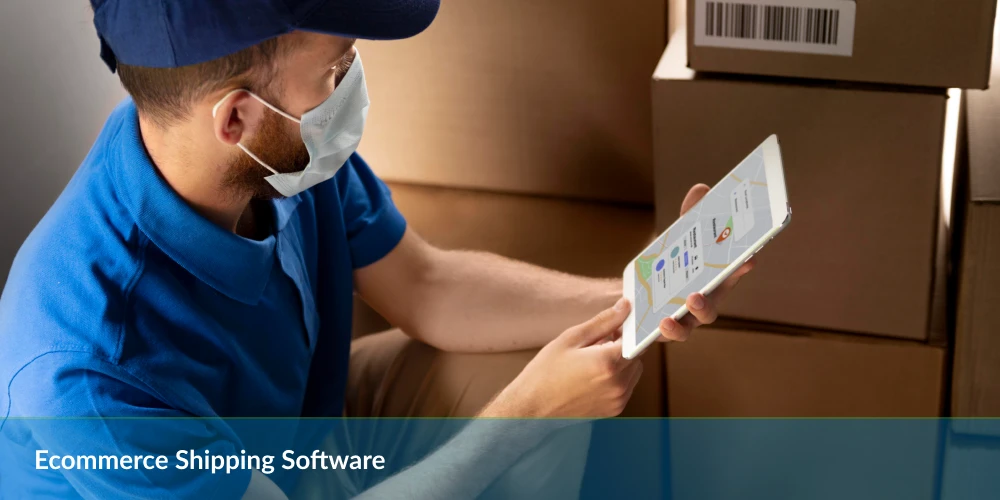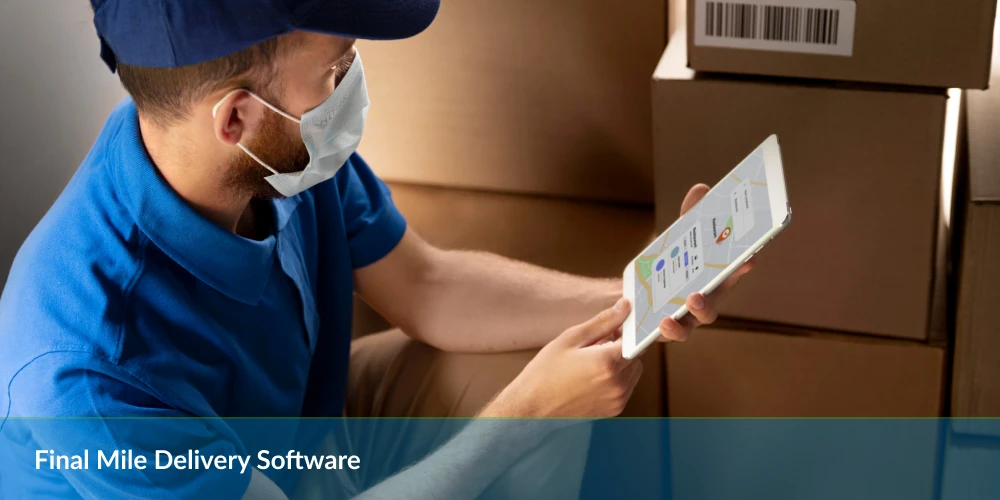Table of Contents
The Shipping Software Market was valued at USD 13.01 billion in 2023 and is expected to reach USD 28.07 billion by 2032, growing at a CAGR of 8.94% from 2024 to 2032.
Source: S&S Insider
As businesses strive to meet increasing customer expectations for fast, reliable deliveries, shipping software has become an essential tool for streamlining and automating key operations. From order processing and shipment tracking to carrier management and documentation, these solutions help businesses optimize fulfillment workflows, reduce errors, and improve overall efficiency.
The explosion of multi-channel E-commerce, from marketplaces like Amazon and eBay to branded storefronts, has redefined the rules of fulfillment. Coordinating inventory, tracking shipments, and managing returns across platforms now demands more than spreadsheets and manual updates. Whether it’s a small online retailer or a global logistics provider, companies of all sizes are leveraging shipping software to scale operations, cut costs, and deliver better customer experiences.
Talking of the stakes? Well, it’s higher than ever. Today’s customers expect two-day delivery or faster and complete visibility into their order status from checkout to doorstep. Shipping isn’t an operational afterthought anymore. It’s the frontline of your customer experience and a key driver of brand perception. And without robust E-commerce shipping software, you’re losing ground before the package even leaves the warehouse.
What Is E-commerce Shipping Software?
E-commerce shipping software is a cloud-based or locally installed solution that manages every component of the shipping workflow. From the moment a customer clicks “Buy” to the package arriving at their doorstep, this software orchestrates a series of operations that ensure efficiency, visibility, and reliability. It integrates directly with online stores and marketplaces, automating processes that previously required time-intensive manual input.
Shipping software handles several mission-critical tasks, streamlining the complex logistics retailers face today. Key functions include:
| Fulfillment Automation | Orders are instantly routed to warehouses or fulfillment centers, triggering pick-and-pack processes without manual input. |
| Shipping Label Generation | Integrates with major carriers to generate shipping labels on demand, including real-time rates and service-level options. |
| Carrier Selection | Automatically evaluates and selects the best carrier based on cost, speed, and reliability for each order. |
| Tracking Updates | Sends real-time delivery updates to customers across multiple touchpoints, ensuring full visibility from dispatch to delivery. |
Unlocking Business Value Through Automation and Insight
Adopting E-commerce shipping software does more than handling logistics as it transforms operations. Merchants gain measurable advantages:
- Operational efficiency: Automation reduces fulfillment errors and minimizes time lost to repetitive manual tasks.
- Cost control: Real-time shipping rate comparisons and batch processing lower overall logistics spend.
- Competitive customer experience: Automatic tracking notifications, reliable delivery windows, and fast processing times directly impact satisfaction and repeat purchases.
These platforms enable teams to scale fulfillment volume without scaling headcount. With every order processed faster and with better accuracy, shipping software shifts logistics from a backend afterthought to a driver of strategic value.
Best E-commerce Shipping Software
Discover the best e-commerce shipping software to streamline fulfillment, reduce costs, and enhance delivery speed for your online store.
1. NetworkON
NetworkON is a dynamic delivery and dispatch management software designed to streamline last-mile delivery operations across industries like logistics, healthcare, field services, and retail. It empowers businesses with tools for real-time order tracking, intelligent route optimization, automated dispatching, and fleet management. Its white-label functionality also allows companies to maintain their brand identity while scaling operations efficiently.
Pros:
- Powerful last-mile delivery optimization with live tracking
- Supports both on-demand and scheduled delivery models
- White-label solution for branded customer experience
- Real-time alerts, route planning, and geofencing capabilities
Cons:
- May require technical setup for API integrations
- More focused on delivery-based businesses than traditional e-commerce
2. Shippo
Shippo is a flexible shipping API and dashboard solution that helps eCommerce merchants connect with a wide range of global carriers. It simplifies shipping logistics by offering discounted rates, label creation, address validation, and tracking capabilities. Shippo is especially beneficial for small to mid-sized retailers looking to save on shipping costs while maintaining a seamless shipping process.
Pros:
- User-friendly interface and easy API integration
- Access to USPS and other discounted carrier rates
- Supports batch label printing and address validation
- Transparent, pay-as-you-go pricing model
Cons:
- Lacks robust inventory or warehouse management features
- Not ideal for high-volume fulfillment needs
3. ShipStation
ShipStation is a robust shipping and order fulfillment software used by thousands of online retailers. It centralizes order management across multiple sales channels (like Amazon, eBay, Shopify, and WooCommerce) and integrates with dozens of shipping carriers to automate fulfillment, labeling, and customer communication. Known for its deep feature set and scalability, ShipStation is suited for growing e-commerce businesses with complex workflows.
Pros:
- Integrates with 100+ eCommerce platforms and marketplaces
- Advanced automation for label printing, order tagging, and shipping rules
- Branded tracking pages and email notifications
- Multi-location inventory support
Cons:
- Steeper learning curve due to its extensive features
- Pricing increases significantly with order volume
4. AfterShip
AfterShip focuses on post-purchase customer experience by offering advanced tracking and notifications across more than 1,000 carriers worldwide. While it doesn’t handle fulfillment or label generation, it enhances customer satisfaction with branded tracking pages, timely updates, and analytics. It’s ideal for businesses wanting to improve customer retention and reduce WISMO (Where Is My Order?) inquiries.
Pros:
- Global carrier support with robust tracking capabilities
- Seamless integration with Shopify, BigCommerce, and other platforms
- Branded emails and tracking pages for a better post-purchase experience
- Analytics to track delivery performance
Cons:
- Doesn’t support shipping label creation or carrier selection
- Advanced features require a paid plan
5. OrderCup
OrderCup is a cloud-based shipping solution tailored for small to mid-sized eCommerce businesses. It offers a straightforward interface to manage orders, print shipping labels, and handle returns. With built-in support for USB scales, thermal printers, and barcode scanners, it simplifies day-to-day shipping tasks. Its affordability and intuitive UI make it a good fit for startups and smaller merchants.
Pros:
- Lightweight and simple to use for smaller operations
- Built-in hardware support (scales, printers)
- Automated returns processing and customs forms
- Free tier available for businesses with low shipping volume
Cons:
- Limited functionality for growing or large enterprises
- Fewer integrations compared to platforms like ShipStation
6. ShipBob
ShipBob is a full-service third-party logistics (3PL) provider that combines software and warehousing to offer a complete fulfillment solution. It stores your inventory in its strategically located fulfillment centers, picks and packs orders, and ships them directly to customers. ShipBob’s tech platform gives businesses real-time inventory and order visibility, making it ideal for DTC (direct-to-consumer) brands scaling nationwide or globally.
Pros:
- Distributed warehouses reduce delivery times and shipping costs
- Real-time inventory and order visibility via an intuitive dashboard
- Integration with major eCommerce platforms like Shopify, BigCommerce, and Amazon
- Handles everything from receiving inventory to returns management
Cons:
- Fulfillment fees can be costly for smaller or low-volume sellers
- Less packaging customization compared to in-house fulfillment
7. ShipMonk
ShipMonk is a fulfillment platform combining warehouse automation and inventory management, catering to e-commerce, subscription box, crowdfunding, and B2B brands. It offers services like kitting, FBA prep, and order routing through its proprietary software and nationwide fulfillment centers. ShipMonk’s technology-first approach makes it a go-to for businesses seeking scalability with robust backend support.
Pros:
- Specializes in multi-channel fulfillment, including B2B and subscriptions
- Powerful inventory and warehouse management tools
- Transparent billing and real-time dashboards
- Scalable for startups and enterprises alike
Cons:
- Onboarding process may be complex and time-intensive
- Pricing can be higher than competitors’ for basic services
Pro Tip: Choose a solution that aligns with your business size and fulfillment needs, whether it’s advanced tracking, automated dispatch, or full-service logistics, to streamline operations and enhance customer experience.
Why E-commerce Platforms Win Big With the Right Shipping Software
In the world of online shopping, fast and reliable shipping is more important than ever. With the right shipping software, businesses can simplify their logistics, improve customer satisfaction, and stay ahead of the competition. Here’s why the right tools can make a big difference.
Accelerated Fulfillment Drives Revenue Growth
Faster shipping translates directly into higher sales velocity. Shipping software reduces fulfillment friction with automated label generation, multi-warehouse routing, and real-time carrier integration. Orders move from checkout to doorsteps faster, shrinking delivery windows from days to hours in some cases.
Case in point: a study by Metapack found that 56% of consumers abandoned a retailer after one bad delivery experience. Platforms enabling merchants to meet high delivery standards reduce the risk of churn and encourage repeat purchases. In practice, platforms that prioritize shipping reliability increase average order volume by increasing consumer trust in timely delivery.
Real-Time Rates Reduce Cart Abandonment
Transparent shipping costs and accurate delivery dates enhance conversion at checkout. Shipping software gives customers real-time carrier rates, tax calculations, and delivery date estimates matched to their geolocation, all without leaving the checkout flow.
Platforms that embed these capabilities reduce friction, boost trust, and capitalize on intent to purchase. The result: higher conversion rates and improved margins without slashing product prices.
Fulfillment Is Stickier Than Features
While product features compel adoption, fulfillment capabilities drive retention. When platforms provide merchants with integrated access to warehouses, label printing, tracking, and returns management, they embed operational reliance. The more deeply shipping gets woven into daily workflows, the harder it becomes to switch providers.
Shopify’s success illustrates this principle. Its end-to-end fulfillment network has increased merchant retention by locking logistical services into storefront functionality. The convenience of managing everything from one console reduces vendor sprawl and simplifies operations, which scales platform dependability.
Attracting Power Sellers Through Operational Efficiency
High-volume merchants choose platforms that reduce manual touchpoints. They need batch order processing, carrier comparisons, inventory syncing, and SLA compliance tracking. Shipping software checks every box. Platforms that offer robust fulfillment tools become magnets for sellers managing thousands of SKUs and hundreds of daily orders.
These sellers bring significantly more GMV (Gross Merchandise Volume), higher subscription tier adoption, and longer lifetime value. By embedding modern shipping workflows, platforms signal their readiness to support large-scale operations. This creates a self-reinforcing network effect where growing sellers draw others by showcasing time and cost efficiencies.
What Leading Shipping Software Must Offer
To meet the demands of modern e-commerce and logistics, top-tier shipping software must evolve beyond just generating shipping labels. In a landscape where speed, accuracy, and customer experience are paramount, businesses need comprehensive solutions that streamline every aspect of the shipping process.
Shipping Automation
Manual shipment processing slows operations. Leading E-commerce shipping software eliminates this bottleneck by automating key tasks. Automatically generating shipping labels, packing slips, and documentation reduces administrative overhead and speeds up dispatch time.
With smart rule-based workflows, the system triggers fulfillment tasks based on order status, customer location, or SKU. For example, an order marked as “ready to ship” can instantly prompt label creation and issue pick-pack instructions without human input.
Multi-Carrier Rate Comparison
Price and speed vary wildly between carriers. Sophisticated tools integrate real-time APIs from USPS, FedEx, UPS, DHL, and dozens of regional couriers. This allows sellers to surface exact rate estimates on the fly.
Whether optimizing for cost, delivery speed, or carrier reliability, merchants can select the best shipping option per order without toggling between websites or portals. Bulk shipping becomes more strategic and less reactive.
Order Fulfillment Integration
Software that doesn’t communicate with warehouses and order management systems disrupts flow. Top-tier platforms embed seamlessly into ERP, OMS, and WMS environments, syncing orders in real time.
This cohesion removes double entry, accelerates order processing, and cuts down on packing errors. The result is faster, cleaner fulfillment from click to doorstep.
Real-Time Tracking and Notifications
Customers want updates. Leading solutions push live tracking details via email or SMS the moment an order ships and continue notifying customers at key delivery milestones.
This visibility slashes WISMO tickets and nurtures buyer confidence. Personalized status pages branded with your store reinforce loyalty and eliminate third-party confusion.
Returns Management
An efficient returns system drives customer satisfaction. E-commerce shipping platforms simplify reverse logistics by automating return label generation and pre-screening return requests with defined rules.
Customers initiate returns self-serve, and teams approve or reject based on condition, timing, or item type. This reduces friction while capturing key data on returns trends and reasons.
Warehouse and Inventory Syncing
Stock visibility supports accurate shipping promises. Sophisticated shipping tools keep inventory counts in sync across every fulfillment center and sales channel in real time.
This keeps listings accurate, prevents overselling, and ensures warehouses don’t ship a product already backordered. When inventory moves instantly, so does confidence.
Branded Shipping Labels and Packaging
The shipping experience reflects the brand. Strong E-commerce shipping platforms allow customization of labels, packing slips, return forms, and tracking pages.
Printed materials can include logos, personalized messages, or promotional inserts. Every package becomes a touchpoint that elevates the unboxing experience and deepens brand loyalty.
Pro Tip: Choose shipping software that automates workflows, integrates seamlessly, and enhances customer experience from dispatch to doorstep.
Platform Integration Is Key
Seamless platform integration connects key systems like order management and warehousing, enabling real-time data flow, reducing errors, and speeding up fulfillment. This boosts efficiency, accuracy, and customer satisfaction in the shipping process.
Integration with E-commerce Platforms
Shipping software must align natively with today’s dominant e-commerce platforms. Merchants using Shopify, WooCommerce, BigCommerce, Magento, and Squarespace expect plug-and-play compatibility because delayed or manual workarounds hinder speed and scalability.
RESTful APIs serve as the foundation for most integrations. When configured correctly, these APIs allow the shipping software to pull product, customer, and order data in real time. Beyond APIs, platform-specific apps housed in app marketplaces accelerate adoption. Shopify, for example, gives visibility to shipping plugins directly from its admin dashboard.
- Shopify: Most shipping apps install in under 3 minutes and integrate with Shopify’s fulfillment and inventory systems without extra configuration.
- WooCommerce: Plugins process order sync directly through WordPress, feeding shipping data through WooCommerce’s hooks and actions architecture.
- BigCommerce: Open APIs allow end-to-end integration with multi-carrier shipping modules visible in the backend UI.
By embedding functionality natively within platform dashboards, software eliminates context switching. Merchants can generate labels, offer real-time rates, create return portals, and track packages; all without leaving the store’s control panel.
Integration with Marketplaces
Sellers operating across marketplaces like Amazon, eBay, Etsy, Walmart, and Target Plus manage fragmented fulfillment pipelines unless their shipping software consolidates inputs under one system. Leading tools sync directly with marketplace seller accounts through secure API authentication.
Order importation happens automatically. As soon as a customer places an order on Amazon or eBay, it flows into the central shipping dashboard in seconds. Tracking numbers feed into the marketplace without manual input, which maintains compliance with SLA commitments and enhances seller performance metrics.
- Amazon: Tools integrate with Seller Central and support Buy Shipping API for Prime and non-Prime orders.
- eBay: Order info and customer details are auto-synced daily or in real-time, depending on seller tier.
- Etsy: Carrier label generation updates tracking in Etsy’s system to prevent account flags.
- Walmart: Integration with Deliverr or WFS (Walmart Fulfillment Services) ensures inventory-level accuracy and guaranteed delivery times.
Multi-channel sellers gain uniform shipping workflows across platforms. This enables reliable data centralization, faster turnaround times, and nearly eliminates human error in order handling and tracking updates.
Drive Down Costs and Elevate Delivery with Analytics-Driven Shipping
In a competitive landscape, shipping is more than just logistics; it is a strategic edge. Analytics empowers businesses to identify cost-saving opportunities, optimize carrier choices, and refine delivery routes. The result is reduced operational expenses and an improved, more reliable customer experience.
Pinpoint Inefficiencies with Real-Time Shipping Data
Shipping analytics surfaces insights hidden in daily dispatch routines. By tracking performance metrics across carriers, zones, and service levels, E-commerce merchants uncover anomalies that inflate shipping spend and erode delivery reliability.
- Carrier delays: If a specific provider consistently underperforms on two-day deliveries in the Southeast U.S., analytics platforms highlight it with timestamped evidence across orders.
- Overspending patterns: When merchants default to express services for zones that could be served by ground shipping within SLA, dashboards flag the cost mismatch.
- Zone imbalance: Centralized fulfillment models often create excessive last-mile costs to outlying zones—analytics track parcel density per region, exposing the need for distributed inventory.
Optimize Decisions with Actionable Intelligence
Visibility into historical and real-time performance data empowers merchants to systematically refine outbound logistics. Integrate shipping data with fulfillment planning to build predictable, cost-efficient models.
- Switch carriers on underperforming lanes without sacrificing SLA compliance.
- Compare rate cards side by side and select carriers based not just on cost, but actual delivery adherence.
- Align shipping methods with margin targets by SKU, destination, and customer profile.
Quantifiable performance evaluation changes the nature of carrier negotiation. When merchants arrive with granular data—on-time delivery percentages per route, damage claim frequency, or average shipping cost by weight class—they gain leverage to demand rate adjustments or service improvements.
Shorten Delivery Windows While Controlling Spend
Analytics doesn’t just cut costs, in fact, it recalibrates operations to support tighter SLAs. By understanding which regions consistently meet one-day or two-day benchmarks with standard ground shipping, merchants eliminate unnecessary air services, ensuring speed without overspending.
Demand forecasting tied to analytics sharpens inventory placement. If 64% of Northeast orders ship on weekdays with consistent volume spikes post-2 pm, software guides stock allocation and packing shifts accordingly. Better timing means fewer missed pickups, faster dispatch, and reduced cutoff-related delays.
Shipping software with robust analytics transforms a cost center into a strategic advantage. Every parcel shipped generates new data platforms that harness it unlock sweeping improvements across efficiency, revenue, and the customer promise.
Accelerating Delivery to Elevate Customer Experience
Customer expectations around delivery times have transformed dramatically. According to a 2023 consumer survey by ShipStation, 71% of online shoppers consider fast delivery as a top criterion when choosing where to buy. Whether it’s 2-day shipping, same-day delivery, or hyperlocal courier dispatch, speed translates directly into satisfaction. E-commerce shipping software enables businesses to implement these capabilities across ZIP codes and regions without overextending logistics operations.
Flexible Fulfillment Options Drive Loyalty
Offering a diverse range of delivery speeds gives control back to the customer, a key driver of loyalty. Merchants can use shipping platforms to surface dynamic shipping options at checkout, such as:
- Same-Day Delivery: Triggered for orders placed within cut-off windows, this is manageable through automated routing to local carriers.
- 2-Day Shipping: Achieved through smart multi-warehouse fulfillment or expedited services from national carriers.
- Local Courier Selection: Areas served by specialized couriers—bike messengers, neighborhood delivery services—can be auto-assigned.
When customers see delivery choices that match their urgency and availability, cart abandonment drops and conversion rises, driven by a seamless checkout logistics experience.
Pro Tip: Offer flexible, real-time shipping options at checkout to boost conversions and build long-term customer loyalty.
Faster Shipping, Tangible Metrics
The connection between delivery speed and customer perception isn’t just anecdotal. McKinsey’s 2024 E-commerce insight report found that brands offering sub-48-hour delivery windows saw an average 17% higher Net Promoter Score (NPS) compared to peers with slower options. Additionally, positive shipping experiences contribute directly to increased product ratings and seller reviews, improving visibility across marketplaces like Amazon, Etsy, and Walmart Marketplace.
The Compound Effect of Speed on Growth
A responsive last-mile experience translates into repeat buyers. When delivery consistently outpaces expectations, customers tell others. Referrals increase. LTV (lifetime value) metrics climb. These aren’t soft benefits. They fuel direct ROI. Shipping software empowers E-commerce brands to engineer these outcomes at scale with actionable delivery intelligence and automation workflows tuned to speed.
Enabling Global Reach Through International Shipping and Compliance
Expanding beyond borders no longer requires bureaucratic chaos. Powerful E-commerce shipping software automates the generation of customs documentation, assigns harmonized system (HS) codes with precision, and applies country-by-country compliance checks in real time. This capability eliminates the risk of shipments being held, returned, or penalized due to missing or incorrect paperwork.
As international demand grows, merchants using automated tools can fulfill and ship cross-border orders as efficiently as domestic ones. There’s no need to manually search tariff codes or navigate complex export regulations; software handles the heavy lifting.
Compliance Intelligence That Flags Risk Pre-Shipment
Removing the guesswork from global compliance, E-commerce shipping software actively scans orders for restricted items, embargoed destinations, and volume/weight constraints. Rules change frequently across trade zones; algorithms built into the platform detect misalignments just as an order comes in, before it becomes a costly fulfillment mistake.
Want to ship lithium batteries to the UAE, cosmetics to Brazil, or dietary supplements to Germany? The software knows what’s permitted, what isn’t, and what requires additional declarations. This results in faster border checks, lower return rates due to non-compliant contents, and—most critically—a reputation for operational excellence in international markets.
No Borders. No Bottlenecks.
With these capabilities in place, merchants scale into new countries without needing to build internal compliance teams or invest months in research. Instead of treating international shipping as a manual exception process, E-commerce platforms transform it into a default, scalable workflow and handled at checkout and processed automatically through fulfillment.
Unlocking Strategic Advantages for E-commerce Platforms and Marketplaces
Integrating advanced E-commerce shipping software delivers structural advantages that platforms can’t afford to ignore. Beyond streamlining fulfillment, it directly improves merchant satisfaction, platform performance, and scalability—three metrics under constant scrutiny by leadership teams and investors alike.
Boosting Merchant Retention and Increasing LTV
Shipping complications contribute heavily to merchant churn. A platform that equips sellers with premium shipping tools creates a frictionless post-purchase experience. With consolidated tracking, batch label printing, negotiated carrier rates, and automation, sellers stop looking elsewhere. They stay longer, ship more, and rely deeply on the ecosystem. As a result, customer lifetime value (LTV) increases without an equivalent rise in acquisition costs.
Numbers reinforce this. According to a 2023 Shippo report, sellers that adopt multi-carrier shipping solutions retain up to 23% more customers year-over-year compared to those using default carrier options. Platforms offering built-in shipping tools translate this stickiness directly into platform revenue.
Lowering Customer Support Burden at Scale
Each “Where is my package?” ticket strains operational overhead and support teams. When shipping software injects real-time tracking, automatic delivery notifications, and seamless returns into the buyer journey, support requests drop significantly. Marketplace operators capture measurable efficiency gains:
- Decrease in per-order support costs: Fewer manual escalations related to ETA uncertainty.
- Faster resolution times: Shipping data centralized within seller dashboards reduces investigation effort.
- Cleaner NPS & review outcomes: Fewer late deliveries minimize negative experiences that hurt marketplace credibility.
For example, after embedding shipping automation, BigCommerce reported a 17% reduction in support tickets related to fulfillment issues across its top-performing vendors. The benefit compounds as more sellers engage.
Positioning for Enterprise Adoption Through Scalable Logistics
Enterprise-grade merchants evaluate platforms through a logistics-first lens. Integration with major carriers, bulk shipping capabilities, rule-based automations, and SLA compliance dashboards all signal operational maturity. By embedding high-performance shipping capabilities, platforms position themselves as partners, not just facilitators.
As marketplaces enhance these logistics features, they gain competitive ground against legacy ERPs and custom solutions. Shopify Plus, for instance, saw a 30% increase in enterprise onboarding in 2022 after expanding access to global carrier networks through its shipping API infrastructure.
Key Takeaways:
Shipping Software Powers Operational Efficiency
Automating fulfillment, label generation, and tracking reduces manual workload, fulfillment errors, and speeds up delivery across all channels.
Platform Integration Is Critical
Seamless connections with e-commerce platforms and marketplaces (like Shopify, Amazon, eBay) eliminate manual processes and unify shipping workflows.
Analytics Unlock Strategic Value
Advanced data insights from shipping software help reduce costs, identify inefficiencies, and improve delivery reliability by optimizing carrier and routing decisions.
Customer Experience Is Shaped by Speed
Fast and flexible delivery options (e.g., same-day or 2-day shipping) increase conversions, build loyalty, and drive higher Net Promoter Scores (NPS).
Global Shipping Simplified with Compliance Automation
Leading platforms automate customs documentation, flag restricted items, and apply real-time compliance rules, enabling frictionless international fulfillment.
Wrapping It Up!
Adopting E-commerce shipping software transforms how merchants operate. The impact reaches far beyond shipping labels and tracking numbers. By automating complex workflows, surfacing real-time logistics data, and unifying carrier services under one system, sellers gain measurable efficiency and control. That translates into faster order turnarounds, reduced shipping costs, and fewer delivery errors, which directly shape the customer experience.
Predictable, fast fulfillment no longer qualifies as a differentiator; customers expect it. Shipping software removes the friction that prevents growth. Merchants no longer have to manually compare carrier rates, enter customer data across multiple systems, or fire-fight when international customs hold up a delivery. These tasks get automated, and exceptions trigger alerts. The result: more bandwidth for growing the business, fewer support tickets, and higher buyer satisfaction.
The wins compound when platforms and marketplaces become active stakeholders. By integrating best-in-class shipping tools—or building their own—they can provide merchants with out-of-the-box logistics capabilities. Some go further by partnering with third-party logistics (3PL) providers or launching embedded fulfillment ecosystems. Each parcel shipped becomes an opportunity for revenue, for seller retention, and ecosystem stickiness.
Shipping software no longer sits quietly in the background. It informs strategic decisions on where to store inventory, how to price fast shipping, and when to offer same-day delivery. It influences merchant onboarding and customer reviews. And it serves as a revenue channel for platforms bold enough to own fulfillment rather than outsource it entirely.
Power Smarter Shipping with NetworkON!
Automate logistics, cut costs, and deliver faster with ease. From tracking to customs workflows, NetworkON simplifies it all — contact us to get started.
Start scaling smarter today.
Frequently Asked Questions
Q1: What is E-commerce shipping software, and why is it important?
E-commerce shipping software automates and manages the shipping process—from order fulfillment to label printing and tracking—ensuring faster, more reliable delivery and reducing manual effort.
Q2: How does shipping software reduce fulfillment costs?
It compares real-time carrier rates, automates label generation, and streamlines workflows, which cuts shipping expenses and labor costs while improving accuracy and speed.
Q3: Can I use shipping software with multiple platforms like Shopify, Amazon, and eBay?
Yes. Most modern shipping solutions offer seamless integration with major e-commerce platforms and marketplaces, allowing centralized order management and fulfillment.
Q4: What features should I look for in the best E-commerce shipping software?
Key features include fulfillment automation, multi-carrier rate comparison, real-time tracking, inventory syncing, returns management, and international shipping compliance.





0 Conversations